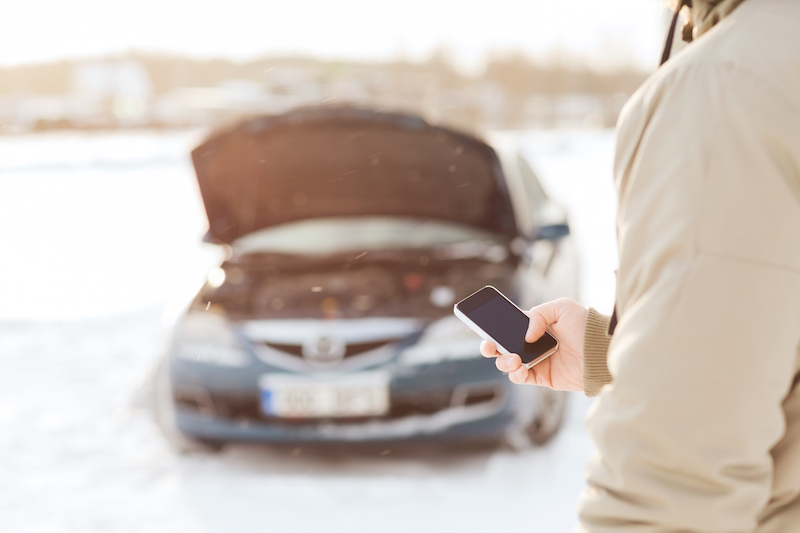
Those of us living in snowy states have a lot to consider come first snowfall. Chief among those things is what to do in the event of a breakdown in the middle of a snow storm. If you’ve taken your smart pills and have prepared a plan well in advance, you won’t have anything to worry about if it happens. But if you drop the ball, you might just find yourself in a world of hurt. Here are the top 5 things to do now so you’ll be ready if it happens.
1. Act now. Remember the old adage that says “an ounce of prevention if worth a pound of cure” and then up the stakes by getting yourself two ounces of prevention just in case. What this translates to in practical terms is taking your car into a mechanic and having it checked out for winter durability. Maybe your battery needs recharging or replacing. Your oil probably needs to be changed if it’s been more than 3,000 miles since the last time. What about the rest of the fluids under your hood, or the belts that make your car go “vroom”? Last but not least, there are your tires, which could be the difference between you getting home safely in the snow or gliding into a ditch for lack of traction.
2. Listen up. We all have busy lives and schedules to keep. But there’s nothing that can quite derail our plans like getting stranded by the side of the road in a snowstorm. So before you head out anywhere during winter, always keep an ear open to weather reports, especially if your intended plans are taking you far from home. If there’s any doubt about your being able to get to your destination safe, think twice.
3. Make a roadside emergency kit. Buying a kit is never a bad idea, but creating your own is the only guaranteed way to ensure that all your bases are covered. For example, some of the standard inclusions of the average roadside kit will include flares, jumper cables, a first aid kit and a disposable camera. But these things will only get you so far. Consider the following things and be sure to include them in your own specially-made emergency kit: a fully charged spare cell phone (you can call 911 even if it’s not activated), a battery operated radio, a flashlight, spare batteries, a small shovel, chemical hand warmers, a blanket, gloves, scarves, a winter cap and extra clothing.
4. Keep some food and water in your car at all times. A lot of people lump this into the same category as the aforementioned roadside emergency kit, but the fact is it’s so important that it deserves its very own place. Consider any medical conditions you have when you make your backseat menu; if you’ve got diabetes, always keep a couple of candy bars handy. Otherwise, stick to dry foods that won’t go bad and that you’ll be able to eat safely without getting sick. No unopened packages of bacon, in other words. Also, keep at least a gallon of water handy.
5. Gas up frequently. As a rule, you should aim to keep your tank at least three quarters of the way full. Lots of us like to wait until the needle’s close to the E before taking our cars in for a big gulp of gas. But if you’re tooling around in the middle of winter and there’s a high probability that you could get stranded somewhere, you’re going to want to have as much gas in your tank as possible to keep your heater running. Just remember that having your tailpipe too close to a bank of snow can cause carbon monoxide to back up into your car, which isn’t exactly the best thing for your health. This is where that aforementioned shovel comes into play.
With a little bit of caution and thoughtful planning, you can turn a snowstorm breakdown from a potentially life threatening situation into a mere inconvenience (albeit a big one). But don’t waste time. Winter’s headed this way.
